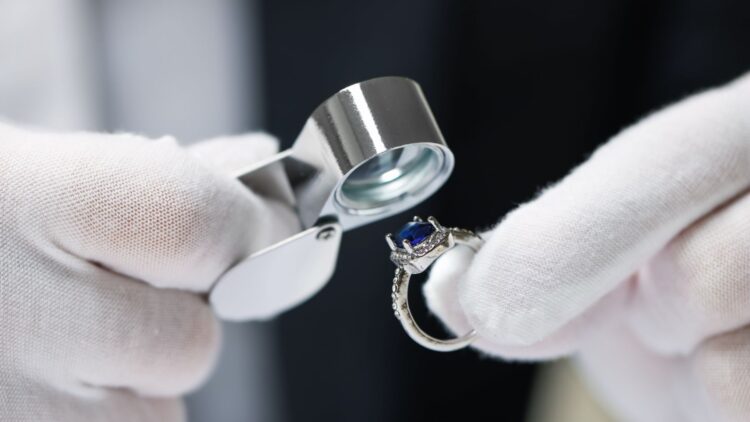When a man walked into a charity shop in Leicester, England, he had no idea that the £15 ($20) ring he picked up from a dusty display case would turn out to be a priceless piece of royal history. At first glance it looked like a simple ring at the thrift shop, but in the end it turned out to be an ancient piece of jewellery whose hidden value is incredible. Many experts have been shocked by the discovery. Read on for all the details.
What the auctioneer felt: “I was stunned and dazzled”
What looked like an normal antique ring turned out to be a mourning ring commissioned in the early 19th century by King George IV, in honor of his beloved sister Princess Amelia, who died in 1810 from tuberculosis.
With no suspecting its origin or worth, the buyer later took the ring to British auctioneer Charles Hanson, whose reaction was immediate and emotional: “I was stunned and dazzled,” said the auctioneer. “The most important charity shop find I’ve heard about in a decade.”
How a royal treasure ended up in a thrift store
The gold and enamel ring, which is now headed to auction, is awaited to fetch between £3,000 and £5,000 (approximately $4,070 to $6,780 USD). The discovery underscores a timeless truth: history is still hiding in plain sight, even in secondhand shops.
However, this isn’t just about the money. As Hanson explains: “It’s not just the monetary value – it’s the emotion, history and humanity behind this ring that truly moves you.”
Commissioned the same year Princess Amelia passed away, the ring was crafted by elite royal goldsmiths and is one of only 52 ever made. These rings were distributed to members of the royal family and close friends who attended her funeral at Windsor Castle.
A ring steeped in sorrow and its symbolism
One of the most poignant details? The ring bears an inscription whose inspiration is base on Amelia’s last words. According to historical accounts, she placed a similar ring containing a lock of her hair into the hand of her father, King George III, whispering “Remember me.”These words were later engraved into the underside of the ring, under an image of a crown.
Underside of the ring, below an image of a crown.
The white enamel on the ring carries deep symbolism, traditionally used in mourning jewelry for those who died unmarried or at a young age. “White enamel symbolized purity and innocence in mourning jewellery, particularly for those who died young or unmarried,” Hanson notes.
“White enamel symbolized purity and innocence in mourning jewellery, particularly for those who died young or unmarried,” Hanson notes.
In contrast to the more somber black enamel used in other mourning rings, “which signified general mourning,” the white here reflects the deep affection her family held for her, giving another layer of emotional resonance to the piece.
“From a simple box emerged a piece of deeply personal Royal history”
“I was stunned and dazzled,” said Mr Hanson. “From a simple box emerged a piece of deeply personal Royal history – commissioned by the Royal family itself to honour a lost loved one. This mourning ring was elaborated to commemorate the life and death of Princess Amelia, and it speaks volumes in its craftsmanship and great symbolism.”
Princess Amelia, the youngest of King George III and Queen Charlotte’s 15 children, was said to be her father’s chosen. Her death reportedly contributed to the King’s final and irrecoverable mental decline. In a final act of devotion, Amelia is said to have pressed a ring containing a lock of her hair into her father’s hand, whispering “remember me” as she lay dying – words now immortalised in this design.

